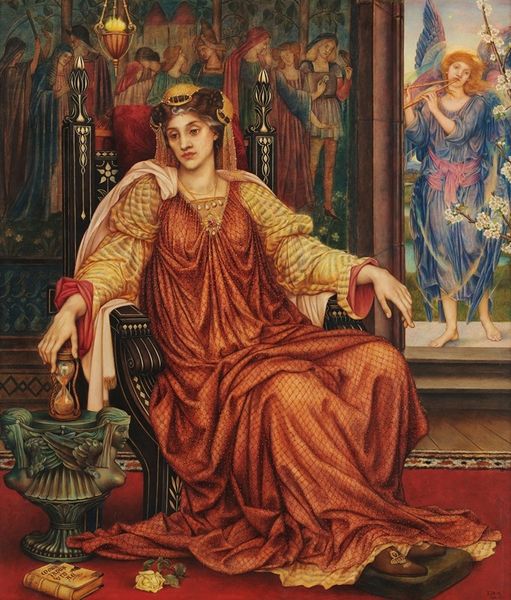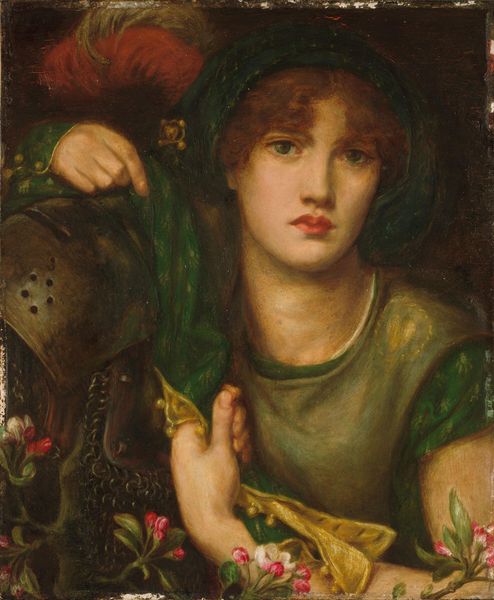
Dimensions: 82.6 x 94 cm
Copyright: Public domain
Editor: So, this is Dante Gabriel Rossetti’s *Sibylla Palmifera* from 1870. It's an oil painting and immediately, I’m struck by the richness of the red fabric. What materials would he have used to achieve such texture? Curator: I'm interested in that precise question, and in how it highlights the commodity culture and the means of production. Rossetti, part of the Pre-Raphaelite Brotherhood, deliberately turned to earlier painting techniques, favoring laborious processes to achieve a perceived authenticity. Notice the pigments themselves - likely derived from specific mineral sources or labor-intensive processes. How does that impact our view? Editor: It makes me think about access. These weren't just off-the-shelf colors, right? Who had access to those materials, and how did that influence the stories being told? Curator: Exactly. The very act of choosing specific, costly pigments links the painting to wealth and status. Also, consider the canvas preparation. These elements aren't just neutral supports; they contribute to the overall material presence and, indeed, the meaning. Is this simply a portrayal of beauty, or does it suggest something about the labour necessary for that representation? Editor: I see what you mean. Looking closer, you notice the brushstrokes and can almost imagine the physical effort involved in building up those layers of paint. The gold jewelry also speaks of class and luxury. Curator: And note how the materiality intersects with symbolism. The palm frond, the burning lamp, the butterfly - all symbols. But are they only symbols? They are each painstakingly rendered using costly and precious materials, pointing towards an act of making more akin to ritual. Editor: I hadn't considered the ritualistic aspect before, the painting as an almost devotional act through the materials themselves! Thank you for shedding light on that. Curator: It’s fascinating to consider art less as an ethereal concept and more as a product of concrete materials and the specific socio-economic contexts in which those materials circulate.
Comments
No comments
Be the first to comment and join the conversation on the ultimate creative platform.













